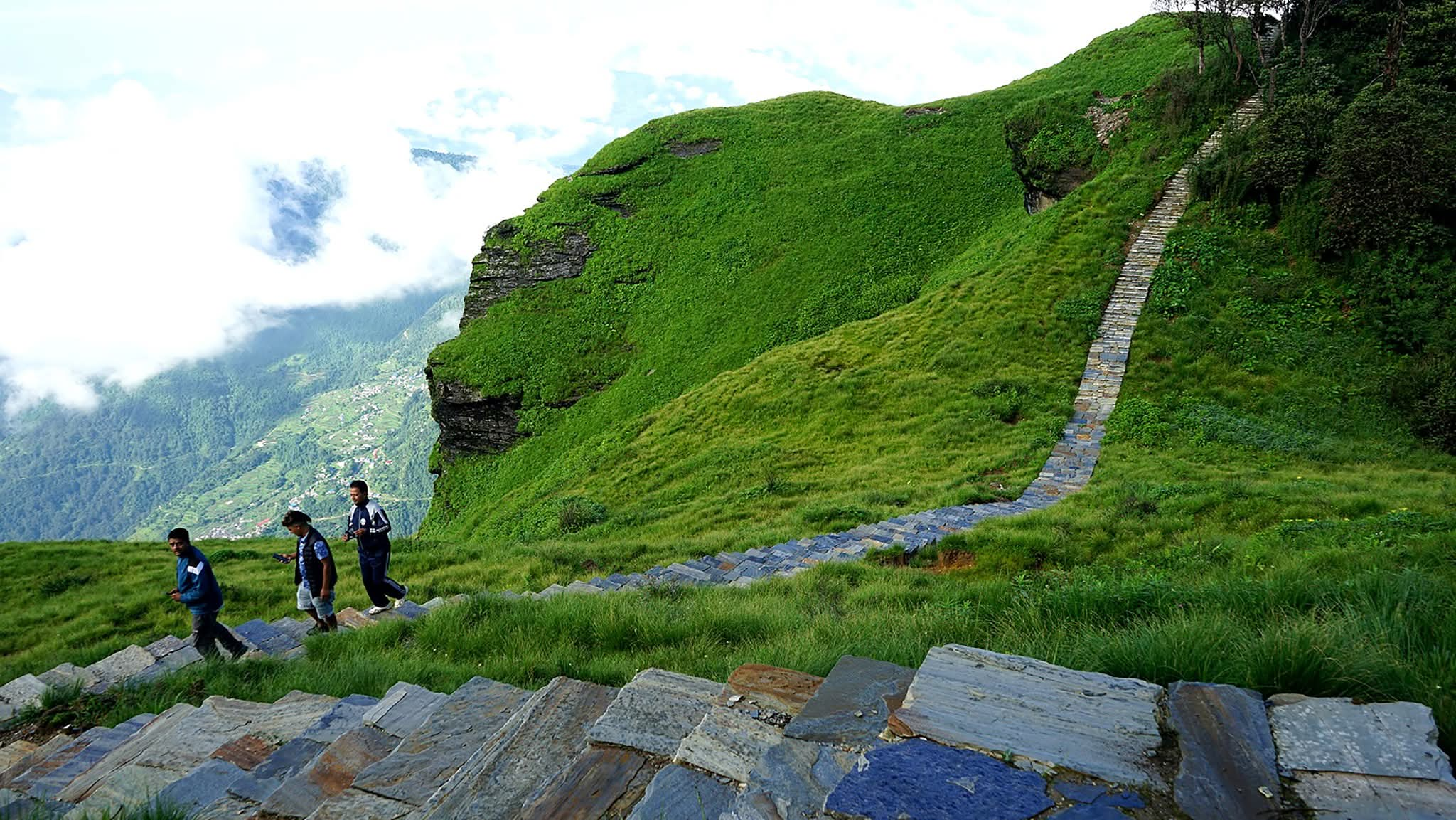Jaljala, Myagdi July 20, 2025
In a significant step toward promoting eco-tourism and preserving religious heritage, a new foot trail and resting site have been constructed in the Mate–Waiphai Danda area of Jaljala, a prominent spiritual and natural destination situated at the tri-junction of Myagdi, Parbat, and Kaski districts in western Nepal.
With a budget allocation of NPR 2 million by the Gandaki Provincial Government, the project successfully completed the construction of a two-kilometer-long foot trail and a resting place this year. The trail leads to Jaljala hill, revered both as a religious pilgrimage site and as a serene destination offering panoramic views of the Annapurna and Dhaulagiri mountain ranges.
Jaljala is known for its spiritual significance among Hindu and Buddhist devotees, who flock to the site during religious events and festivals. In recent years, it has also emerged as a destination for nature enthusiasts and hikers looking to experience undisturbed forest trails, biodiversity, and cultural immersion.
Local leaders and tourism advocates have welcomed the investment, saying it will improve accessibility for pilgrims and trekkers while helping to generate sustainable livelihood opportunities for nearby communities. They have also emphasized the importance of maintaining environmental balance as infrastructure expands in this ecologically sensitive zone.
Environmental experts are optimistic that such small-scale, low-impact developments—when carried out with community involvement and ecological sensitivity—can help balance conservation with economic development in Nepal’s hilly regions.
The newly constructed trail is expected to boost local tourism, reduce the pressure on overcrowded trekking routes, and offer an alternative for travelers seeking lesser-known, culturally rich destinations.
As climate change and over-tourism challenge the Himalayas, initiatives like the Jaljala foot trail underscore the importance of decentralizing tourism, celebrating local heritage, and building resilient, eco-friendly infrastructure for the future.